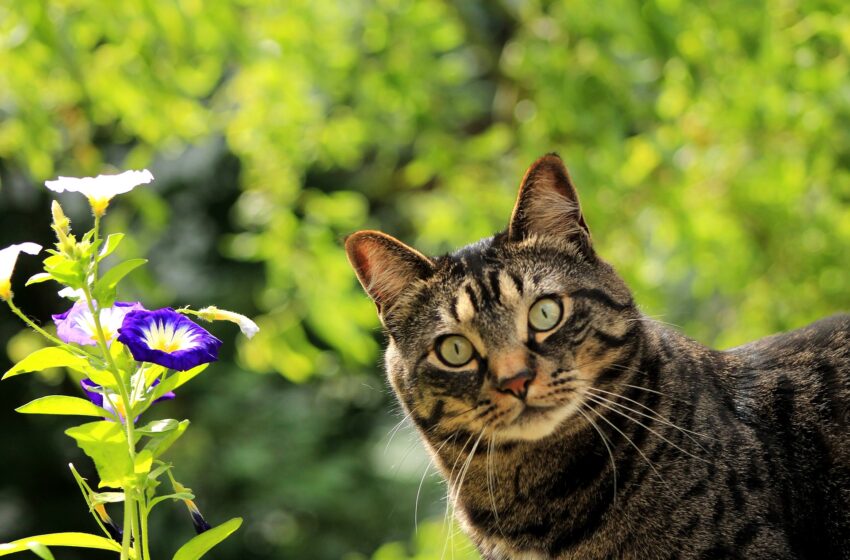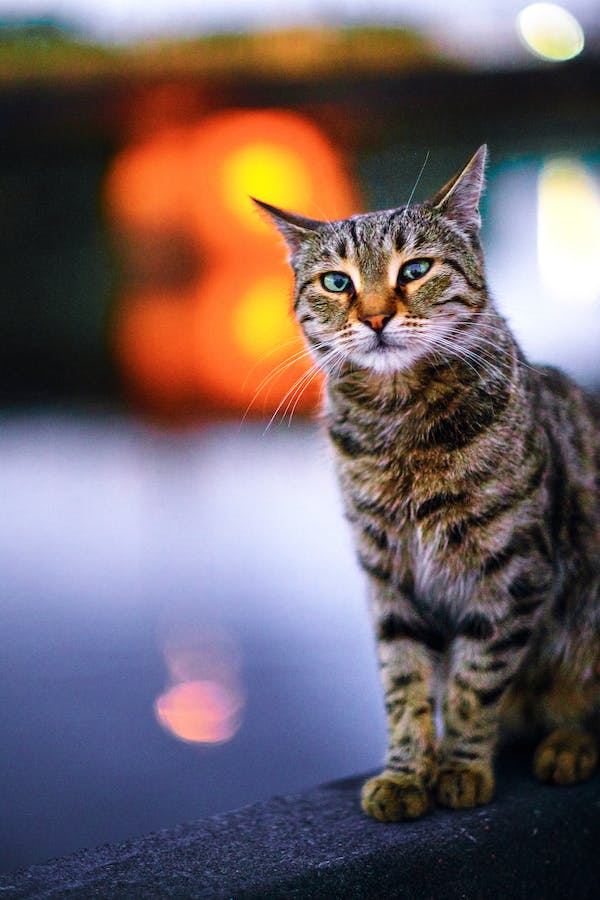Decoding Cat Body Language: What Your Feline Friend is Trying to Tell You

Mypetpulse.com Cat Body Language
As cat owners, it’s important for us to understand our pet cat’s body language, as they communicate a lot through non-verbal cues. Cats have a complex system of body language that they use to express their emotions, needs, and intentions. By learning to interpret their body language, we can better understand our cats and strengthen our bond with them. Together, we can build a bond of trust, love, and mutual understanding, creating a harmonious and fulfilling relationship that celebrates the unique connection between humans and their feline companions.
Guide to Basic Obedience Training for Your Beloved Pet

- Tail Talk: Cats communicate a lot with their tails. The position, movement, and fluffiness of their tails can convey various emotions. For instance, a straight, relaxed tail usually indicates that your cat is feeling calm and content. On the other hand, a tail that is puffed up, bristled, or tucked between the legs may indicate fear, aggression, or anxiety. If your cat’s tail is flicking rapidly, it may indicate irritation or agitation. However, if the tip of the tail is twitching slowly, it may signal curiosity or excitement. Cats also use their tails to communicate with other cats. For example, a cat may wrap its tail around another cat as a friendly gesture, or hold its tail erect in a dominant posture.
- Ear Expressions: Cats have highly sensitive ears that are capable of various movements and positions to express their emotions. When a cat’s ears are facing forward, it usually indicates that your cat is feeling relaxed or curious. However, if the ears are flattened against the head, it may be a sign of fear, anger, or discomfort. Cats may also tilt their ears back and forth when they are listening intently or trying to locate a sound. It’s important to pay attention to your cat’s ear expressions, as they can provide valuable insights into your cat’s mood and emotions.

- Eye Contact: Cats use their eyes to communicate a lot. Direct eye contact from a relaxed, blinking cat usually signals affection and trust. On the other hand, prolonged staring with dilated pupils may indicate aggression or threat. Cats may also squint their eyes when they are feeling content or relaxed. When a cat’s pupils are constricted, it may indicate fear or stress. However, when the pupils are fully dilated, it may indicate excitement, arousal, or aggression. It’s crucial to observe your cat’s eyes in combination with other body language cues to accurately interpret their emotions.
- Body Posture: Cats use their bodies to convey a wealth of information. A relaxed and loose body posture typically indicates that your cat is feeling at ease and comfortable. However, a stiff body with arched back, puffed fur, and tail bristled can indicate fear, aggression, or defensiveness. Cats may also crouch low to the ground with their ears flattened against the head when they are feeling threatened or anxious. Additionally, a cat may roll over on its back and expose its belly as a sign of submission, trust, or playfulness. It’s essential to pay attention to your cat’s overall body posture to better understand their emotions.

- Vocalization: While cats primarily communicate non-verbally, their vocalizations can also provide valuable insights into their emotions. Cats use a variety of vocal cues, such as meowing, purring, hissing, growling, and chirping, to convey different messages. For example, a purring cat usually indicates contentment, relaxation, or comfort. On the other hand, hissing or growling can be signs of fear, anger, or aggression. Cats may also chirp or trill as a friendly greeting or a sign of excitement. It’s important to pay attention to the context and the accompanying body language to accurately interpret your cat’s vocalizations.
By understanding and interpreting your cat’s body language and vocalizations, you can better respond to their needs and emotions. This can help strengthen your bond with your feline friend and create a more fulfilling relationship. Here are some tips on how to effectively communicate with your cat:

- Observe your cat’s body language: Pay attention to your cat’s tail, ears, eyes, and overall body posture to better understand their emotions and needs.
- Use a soothing tone: Cats respond well to a soft and calming tone of voice. Use a soothing voice when communicating with your cat to help them feel more relaxed and comfortable.
- Respect their boundaries: Cats are independent animals and may need some space from time to time. Respect your cat’s boundaries and give them the freedom to explore and play on their own terms.
- Provide positive reinforcement: Reward your cat with treats or affection when they exhibit positive behavior. This can help reinforce good behavior and strengthen your bond with your cat.
- Consult a veterinarian: If you notice any sudden changes in your cat’s behavior or body language, it’s important to consult a veterinarian. They can help identify any underlying health issues or behavioral problems and provide the necessary treatment.
Delving into the world of cat body language opens up a fascinating realm of understanding and connection with our feline friends. By paying attention to their non-verbal cues, we can decipher the intricate language they use to communicate their emotions, needs, and intentions. Cats are complex creatures, and their body language is a window into their inner world. The way they position their tails, move their ears, make eye contact, and hold their bodies reveals a wealth of information. Through these cues, they express their contentment, fear, affection, playfulness, and everything in between.
In our quest to communicate with our cats, it’s essential to observe their body language, use a soothing tone, respect their boundaries, and provide positive reinforcement. This gentle and patient approach fosters a safe and nurturing environment where they can flourish. However, if we notice any sudden changes or persistent concerns, seeking guidance from a veterinarian can provide valuable insights and ensure our cat’s well-being.



2 Comments
Your article helped me a lot, is there any more related content? Thanks!
**cellufend**
cellufend is a natural supplement developed to support balanced blood sugar levels through a blend of botanical extracts and essential nutrients.